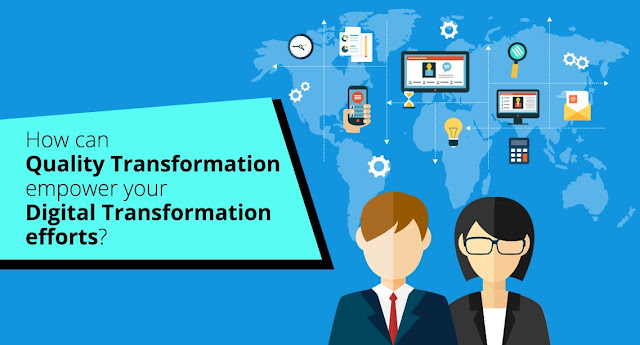The conduct of Migration Testing in 5 effective ways
 | |
| Migration Testing |
Businesses
have resorted to digital transformation in a big way to stay competitive,
increase productivity, reduce the cost of operations, and improve the security
of data and information. Also, the changing dynamics of business has led to
mergers and acquisitions, which besides being an integral facet of digital transformation has necessitated the transfer of data and information - from the
legacy systems to the new age systems, notably the cloud. However, the
endeavour of organizations to deliver data and information in the right format
and to the right set of people has made migration
testing a necessity.
The
process of migration is not always smooth and consists of many challenges.
Unless these challenges are met head on with careful planning and by
implementing best practices, they can create hurdles in the smooth migration of
systems, applications, and databases.
Migration
challenges
1.
Workloads: Not every workload is designed to work or stored in the same
way. Some can be tailormade to work on a cloud platform whereas others might
work seamlessly on-premise or in a hybrid system. The migration testing
approach should take these into account while validating the strategy.
2.
Applications: Like systems, applications are critical to your business
as well. The migration testing strategy should take into account the nature of
dependencies of these applications and the risks involved. The strategy should
assess the support needed for such applications to function effectively post
migration. The focus of the migration team should also be geared towards
conducting user acceptance and performance testing exercises.
3.
Data migration: While migrating data to other systems, care should be
taken to ensure their security and integrity. The data migration testing
exercise should monitor and manage the databases based on the order they are
needed by the systems or applications to function. As far as ensuring the
security and integrity of data are concerned, the migration process should
strictly adhere to the security protocols and regulations.
Once
the above mentioned challenges are mitigated, then the crucial task of
initiating a data center migration should be undertaken. At the outset, the
allotted budget should be revisited to assess the cost of manpower or the
required real estate to carry out migration. Migrating your data center can be
an onerous exercise, which through proper planning and implementing best
practices can be done smoothly. Let us find out how in five effective ways the
testing of data migration can be achieved.
#1
Scope of migration: Carry out an assessment of the systems and applications that
are to be
migrated. Create a list of items to be migrated either to the cloud
or to the new IT environment. It is not necessary to move each and every bit
and piece of your IT architecture but only the crucial ones that are needed by
your organization to function seamlessly. Also, take into account the
criticality of downtime in the entire scheme of things.
#2
Transportation of systems: The migration exercise might involve replacing your ageing
legacy systems with the new ones or transporting them to a new location. Your
migration testing approach should assess the stability of the IT platforms to
ensure they do not malfunction post transportation. It would be a good idea to
keep a new system in place should something go wrong during migration.
#3
Know your data:
Analyse the criticality of your databases and ascertain how they can impact the
overall IT operations. List the order of databases to be migrated and ensure
their security and integrity. This is arguably the most critical part of
migration, as any loss or manipulation of data during migration can have dire
consequences for the organization.
#4
Establish your network: If your IT architecture is to be moved to the cloud then the
robust functioning of your IT network is of primary importance. The cloud
migration testing should validate the communication of the network at the new
location. Merely transplanting your existing network to the new location might
not suffice. The network configuration at the new location should be redrawn to
ensure its effective functioning.
#5
Engage your stakeholders: It is better to engage third party services in your migration
exercise. The testing exercise should find out if the existing resources are
capable enough to carry out the job. Involve the third parties in setting up
your migration strategy and keep them updated on the timelines.
Conclusion
The
migration of your IT infrastructure is a painstaking process and requires
thorough planning and execution. This is where a suitable migration testing
strategy can be of help in removing the bottlenecks, streamlining processes,
and prioritizing activities. It can preempt your organization from any
unforeseen trouble.
This
Article is originally published at Medium.com, 5
effective ways to conduct Migration Testing.


Comments
Post a Comment